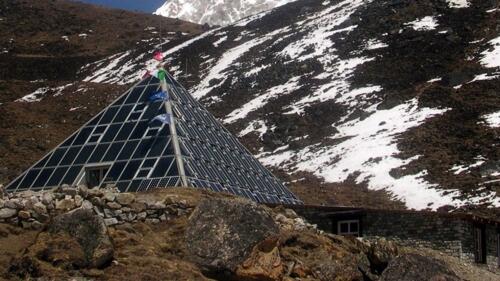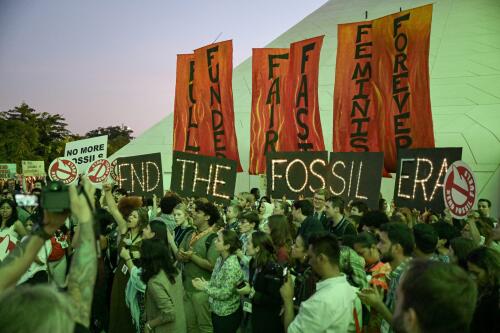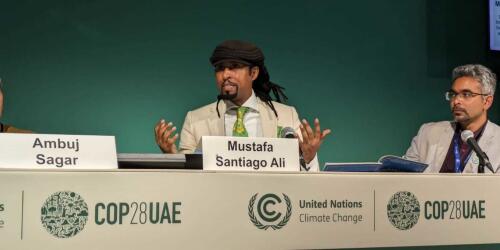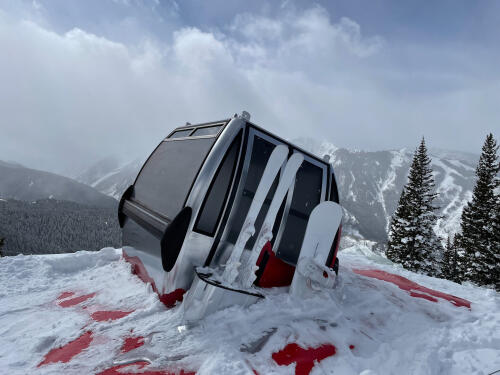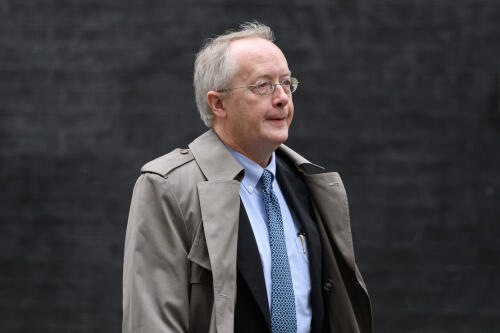Climate change
Glaciers in the Himalayas are melting rapidly, but a new report showed an astonishing phenomenon in the world’s tallest mountain range could be helping to slow the effects of the global climate crisis. When warming temperatures hit certain high-altitude ice masses, it sets off a surprising reaction that blows robust cold winds down the slopes, according to the study published December 4 in the journal Nature Geoscience. The warming climate creates a greater temperature gap between the surrounding air above Himalayan glaciers and the cooler air directly in contact with the ice masses’ surface, explained Francesca Pellicciotti, professor of glaciology at the Institute of Science and Technology Austria and lead author of the study. “This leads to an increase in turbulent heat exchange at the glacier’s surface and stronger cooling of the surface air mass,” she said in a news release. As the cool, dry surface air gets coole...
Dubai, United Arab Emirates—”The North Star of the COP28 Presidency is to keep 1.5°C within reach,” has been the frequent refrain of Sultan Ahmed Al Jaber, the COP28 president overseeing the current U.N. climate change negotiations in Dubai. Al Jaber is reflecting the oft-chanted activist slogan “Keep 1.5 Alive!” The idea is that humanity must reduce its emissions of globe-warming greenhouse gases from burning fossil fuels sufficiently to keep the planet from warming more than 1.5 degrees Celsius above the pre-industrial baseline (1850-1900). It is worth tracing the history of where the 1.5 C “North Star” originated and what the consequences of breaching it would likely be. The 1.5 C threshold was officially enshrined as a goal under the United Nations Framework Convention on Climate Change with the adoption of the Paris Climate Change Agreement in 2015. Article 2 in the Paris Agreement commits s...
The word “acceleration” is top of mind for many people as this year’s negotiations draw to a close at the 28th meeting of the UN Climate Conference of the Parties (COP28). With only a handful of years left to reach the net-zero agreements set out in the Paris Agreement of 2015, nations are racing to phase out unabated fossil fuel consumption and ramp up renewable energy sources. Stanford co-hosted an official side event with the International Centre for Climate Change and Development (ICCCAD) and the Independent University, Bangladesh to probe a critical tension: nations around the world will need to balance “fast and fair” approaches as they rapidly transition to clean energy technology, safeguard the long-term health of ecosystems, and prepare for lasting community impacts from climate change. The event was one of several co-organized by a delegation of Stanford faculty, scholars, and studen...
Every December, some 320–390mn people hit the ski slopes globally. As these outdoor enthusiasts know all too well, trail conditions can make or break the experience. Poor skiing conditions don’t just detract from the consumer experience, for the companies operating these resorts these could spell losses—or even threaten survival. Last season, several resorts were forced to temporarily close due to conditions. Sixty-eight countries around the world offer snow-covered ski resorts, but Alpine countries (Switzerland, France, Austria, Germany, and Italy) and the United States take the lion’s share, welcoming two-thirds of skiers in the 2021–2022 season. About 80% of the world’s ski resorts that exceed 1mn skiers per year are in Europe, mostly in the Alps region. Over the past 50 years, the Alps has experienced an 8.3% decline per decade in seasonal snow cover (November to May), according to a paper published in the journal Natur...
“A superstar of the Denialosphere” is how former journalist Eric Pooley described Myron Ebell in his 2010 book “The Climate War.” Business Insider wrote in 2009 that Ebell “may be enemy #1 to the current climate change community.” “One of the single greatest threats our planet has ever faced,” the Sierra Club opined in 2016. Rolling Stone put him in its list of top six “misleaders.” And those are just the labels Ebell has boasted about in his own biography. Ebell, 70, has been at the forefront of climate change denial for more than two decades — and in fighting against conservationists before that — through his advocacy, commentary and influence with conservatives and Republicans. He’s played roles in blocking cap-and-trade legislation for carbon dioxide, the unsuccessful 1990s efforts to change the Endangered Species Act and former President Donald Trum...
